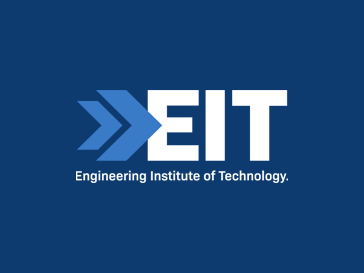The convergence of machine learning and engineering is perhaps the most important crossing of paths in modern times.
Companies in a plethora of industries are expected to (and already are) opting-in to the AI future. As technology advances, it is up to the prospective engineer to adapt to the innovation that is occurring and use it to their advantage.
Machine learning and certain levels of AI have seen in the automated industrial warehouse. However, ‘AI’ and ‘machine learning’ have become a little like buzzwords in the engineering world today. Entry-level engineering students might be questioning what exactly might be impacting the future workplace they are studying towards. What does this so-called threatening AI look like?
 Source: Pixabay
Source: Pixabay
CEO of machine learning company Iprova, Julian Nolan explains:
“For example, a smart microphone could have embedded algorithms that normalise input audio levels and clean out an adjustable level of background noise. If it does this in real-time to minimise the need for post-production, it doesn’t mean the microphone uses AI; it is using algorithms that can process data very quickly. It’s impressive, but it isn’t quite AI.”
Nolan even makes the distinction that the digital assistants from Amazon, Samsung and Google - that are seemingly artificially intelligent - lack the hallmarks of what a truly artificially intelligent system might look like.
He explains:
“But while we’re still many years away from truly using AI in many electronic products, AI is already beginning to transform the development of new electronics at the invention stage. Iprova, for example, uses advanced machine learning to converge myriads of data from seemingly unrelated industries to generate truly novel intentions for their clients.”
Electronics and AI
Bringing data generated in several different engineering industries together could lead to new technologies that could potentially change the world. Getting computers to correlate and compare data from seemingly unrelated industries and suggest new inventions out of it is when AI will genuinely be considered sentient. Alternatively, so alludes Nolan. He calls this ‘augmenting human intelligence’.
However, the embedding of a machine learning within electronics is becoming industry standard, at the moment. Every smartphone must act as a smart, almost human, personal assistant these days. The cameras inside electronics are getting much better, too.
Stanford University engineers have thrown their AI-prowess behind image recognition technology. They have developed an artificially intelligent camera that recognizes objects it ‘sees’ in the real world, much faster than previous camera systems before it. It is more energy efficient as well.
 Source: Pixabay
Source: Pixabay
Gordon Wetzstein, an assistant professor of electrical engineering at Stanford, who led the research, alluded to the fact that this would help minimize the reasonably large, ‘energy intensive’ computer that runs inside of a self-driving car. The engineers at Stanford have experimented with fusing an optical computer, with a digital electronic computer to speed up the image recognition.
The engineers intend to continue engineering the computers so a camera can recognize its surroundings at (literally) the speed of light. Autonomous vehicles have to make the same split-second decisions that humans do when controlling a car. The engineers say that the marrying of the two computer types gives lessens the mathematical load required. The optical computer preprocesses the image data through a customized optics layer via light and subsequently does a lot of the precise number crunching.
The engineers at Stanford say this saves a lot of time and energy otherwise consumed by computation in single computer systems. The engineers plan to continue making the system smaller and smaller, and improving autonomous cars as they go along.
Works Cited
“How AI Is Helping Engineers Invent New Ideas.” Mechanical Engineering History Timeline - IMechE, www.imeche.org/news/news-article/how-ai-is-helping-engineers-invent-new-ideas.
Stanford University. “New AI Camera Could Revolutionize Autonomous Vehicles | Stanford News.” Stanford University, 22 Aug. 2018, news.stanford.edu/2018/08/17/new-ai-camera-revolutionize-autonomous-vehicles/.
Williams, Alun. “Comment: How AI and Convergence Turns Electronic Engineers into Invention Developers.” Electronics Weekly, 14 Aug. 2018, www.electronicsweekly.com/news/comment-ai-convergence-turns-electronic-engineers-invention-developers-2018-08/.
